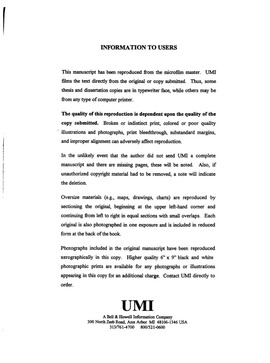| dc.contributor.author | Santos, Helio M. R. | en_US |
| dc.date.accessioned | 2013-08-16T12:29:55Z | |
| dc.date.available | 2013-08-16T12:29:55Z | |
| dc.date.issued | 1997 | en_US |
| dc.identifier.uri | https://hdl.handle.net/11244/5574 | |
| dc.description.abstract | Based on this broad investigation, the most probable instability mechanism is the creation of cracks with subsequent penetration of the drilling fluid into the fractures. An innovative conceptual model to analyze wellbore stability is presented, based on energy concepts. When the internal energy level of the rock reaches a critical limit, fracture surfaces are created to reduce the internal energy level to an acceptable level. The most important energetic events during drilling a wellbore are described; an energy balance should be performed in order to ascertain if the critical limit for the rock is achieved. New laboratory experiments are proposed so that the internal energy limit for the rock be measured. In addition, these experiments will allow the validation of the proposed mechanism. Field cases are described showing that the adoption of non-penetrating fluid strongly reduced, and sometimes completely eliminated, severe problems in areas prone of instability. | en_US |
| dc.description.abstract | A new methodology to characterize shales based on thermal analysis is proposed. The need to better define the water distribution in a shale was the main driving force for the search of a methodology capable of substituting the X-Ray diffraction method. All the important features of a shaly rock can be described, including the clay minerals and the different water types associated with them. | en_US |
| dc.description.abstract | Shale instability is today, probably, the largest single problem during drilling accounting for heavy losses for the oil industry. Research has been focused mainly in the chemical aspect, since shale is considered a very reactive rock when in contact with water. Solutions have quite often pointed to new additives with the aim of turning the drilling fluid more inhibitive. The observation that strong reaction with water occurs only in partially-dried shales led to the conclusion that a deep understanding of the actual downhole shale-fluid interaction was still missing. | en_US |
| dc.description.abstract | This study concentrates on this last point, with emphasis on laboratory experiments. With the availability of well-preserved shale cores from offshore wells, an extensive laboratory research was conducted in order to investigate concepts and ideas used by the industry to optimize the drilling fluid. The results showed that inappropriate sample handling procedure generate the false notion that shales strongly swell in contact with water. Even though shale swelling has been questioned before, the results presented in this study provide a strong and irrefutable evidence that instabilities in shales are mainly originated from mechanical rather than chemical causes. | en_US |
| dc.description.abstract | In order to closely mimic the downhole conditions, especially pressure, a new triaxial laboratory test was developed to evaluate shale-fluid interaction. Tests conducted with three different shale types confirmed the results obtained with immersion tests under atmospheric conditions: the preserved samples did not swell when in contact with water. On the other hand, a strong reaction was observed with all partially-dried specimens. | en_US |
| dc.format.extent | xxvii, 365 leaves : | en_US |
| dc.subject | Shale. | en_US |
| dc.subject | Drilling muds. | en_US |
| dc.subject | Oil well drilling. | en_US |
| dc.subject | Engineering, Civil. | en_US |
| dc.subject | Engineering, Petroleum. | en_US |
| dc.title | A new conceptual approach to shale stability. | en_US |
| dc.type | Thesis | en_US |
| dc.thesis.degree | Ph.D. | en_US |
| dc.thesis.degreeDiscipline | Mewbourne School of Petroleum and Geological Engineering | en_US |
| dc.note | Source: Dissertation Abstracts International, Volume: 58-10, Section: B, page: 5622. | en_US |
| ou.identifier | (UMI)AAI9812263 | en_US |
| ou.group | Mewbourne College of Earth and Energy::Mewbourne School of Petroleum and Geological Engineering | |
